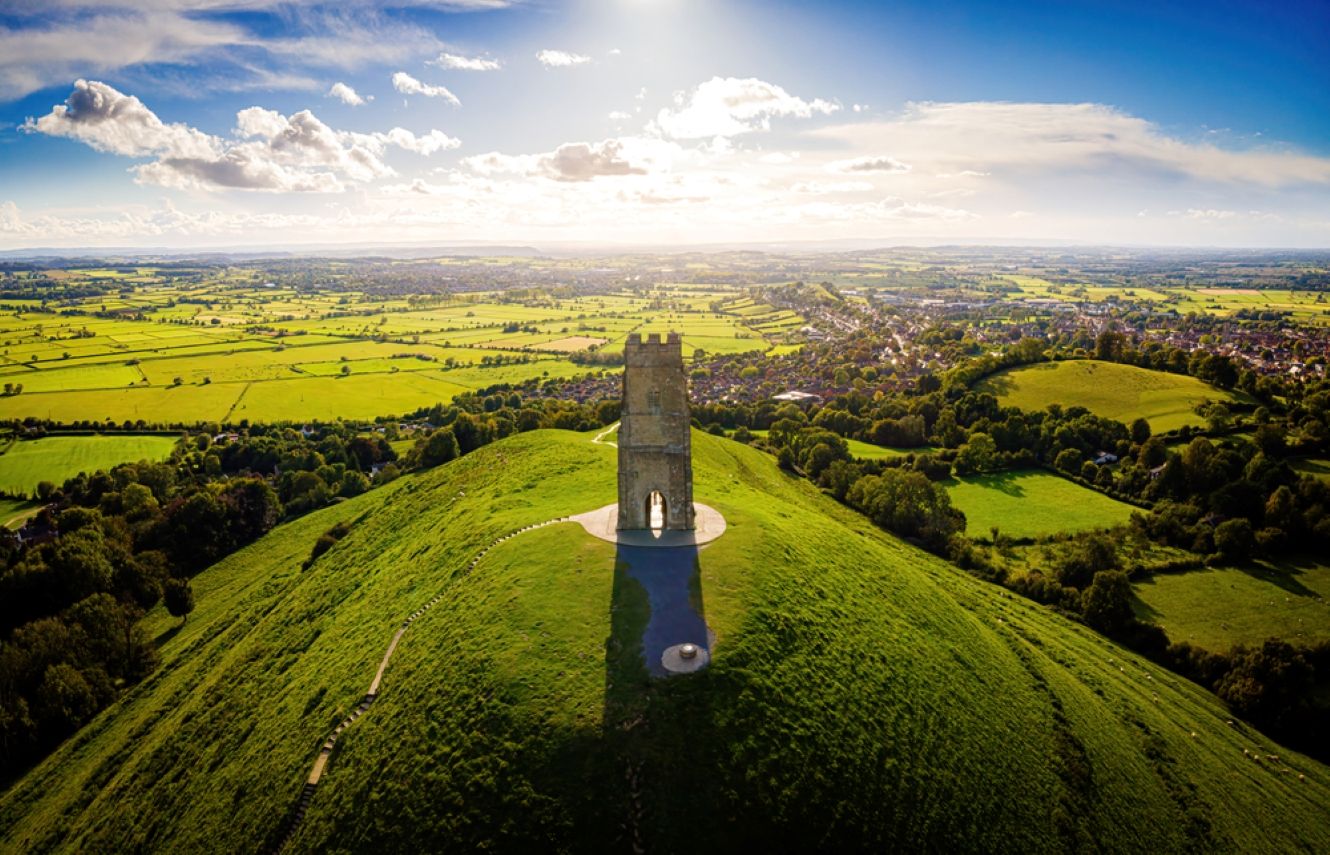Somerset county's most well-known town, Glastonbury, is rich in scenic scenery and is immersed in history and legend. Glastonbury also has the U. K’s largest music festival. It is a quaint small town with a keen sense of personality and plenty of charm all around it. Once visitors enter Glastonbury village, they will immediately recognize it as a haven and a destination of travel where visitors come to seek peace and contentment.
For such a little village, Glastonbury seems to have a great deal to offer, and sometimes a day tour won't suffice to enjoy it all, so people from near and far alike will find something to amaze, thrill, and perhaps entertain them. Even if travelers cannot attend the festival, Glastonbury is still worth the journey. It's an incredibly fascinating town with a unique vibe in the UK and a rich history where visitors can learn a new culture while traveling.
What To Explore In The Town Of Glastonbury
The Glastonbury Abbey
One cannot emphasize the influence that Glastonbury Abbey held during the Middle Ages, even though it is now mysterious rubble. This out-of-the-ordinary tourist destination combines heritage, energy, and tradition, and it has been associated with the King Arthur myth since the Middle Ages.
According to some tales, the earliest Christian institution in Britain connected to Joseph of Arimathea was located in Glastonbury. However, with legend and magic at its heart, the abbey is a well-liked tourist attraction.
The Glastonbury Tor
Glastonbury Tor is a remote sandstone cliff that rises above the Somerset Levels and has been revered since the Archaic Period. The priest of the Glastonbury Abbey, Richard Whiting, was executed here for treachery in 1593 because of his allegiance to Rome. He was hanged, dragged, and cut into quarters.
The Holy Grail is believed to be in The Tor, said to have been the setting of Arthur Folklore's Avalon. It has been proposed as a doorway to the Annwn fairy kingdom in the legend of Pagan Celtic. Since it's unknown if those steps were intended for farming, protection, or as a means of a hallowed labyrinth for tourists, they have piqued interest for many centuries.
The Somerset Rural Life Museum
One of the many museums in England, this museum commemorates the heritage of Glastonbury's ordinary folk and is situated on a picturesque farm near a fourteenth-century barn. The barn served as the tithe barn of the abbey and was utilized for storing rye and wheat.
Exhibitions on various subjects, including crafts, literacy, cultural events, and rituals for remembering the deceased, are in the adjoining farmhouse.
The patio and barn are filled with various antique tools used for agriculture, fishing, excavating peat, cropping willow, and making cider, milk, and butter. Additionally, the farm's medieval structures, a harvest apple orchard, a honeycomb, and uncommon varieties of sheep and chicken are all identified with explanatory boards.
The Chalice Wells And Gardens
Tourists can take a break and absorb the calm and tranquility of this lovely spot at a historic well that flows with medicinal waters.
This natural plunger, located at the base of Glastonbury Tor, is encircled by lovely meadows and orchards. The Chalice Well Foundation owns and operates it.
The freshwater, which is still available for consumption, is thought to have medicinal qualities. There is a tiny pond where people can swim or kayak while the water runs through the gardens.
The Glastonbury Tribunal
The Glastonbury Tribunal is a fifteenth-century trader's residence with a little later Tudor exterior that is maintained by English Heritage. The Glastonbury Lake Museum, operated by the neighborhood antiquarian organization, is upstairs. The bottom floor of the building houses a visitor center.
The structure is filled with fascinating historical characteristics, such as a Tudor Rose and Abbot Richard Beere's crest of arms over the entryway. There have been rumors that the structure served as the abbey's courtroom. The bottom floor's back chamber features plasterwork, roof tiles, and an Elizabethan window.
Eat Up In Glastonbury
The Old Tannery Restaurant And Bar
Set on the bottom level of the Red Brick Building, this laid-back and casual establishment takes pride in promoting and encouraging a wide range of regional suppliers and producers, which helps the regional economy.
Their pub also carries a wide selection of fine cocktails and beverages in addition to offering local and seasonal cuisines for breakfast, luncheon, and supper.
Rainbow's End
Rainbow's End is renowned for its fully vegan and vegetarian fare that incorporates elements from around the world. Dishes here range from moussaka to tagine to a traditional Sunday roast. A fantastic salad bar and delectable baked pastries are among the features of Rainbow's.
Goodfellows
Goodfellows is known for its refined, tasteful modest fare. Chef Adam's expertise is seafood, and the menu at Goodfellows offers a variety of inventive fish dishes in addition to more conventional meat and vegetarian selections. Guests can choose from the delectable items on the à la carte selection or the sampling menu, which includes flawlessly prepared scallops and tuna sashimi.
Burns The Bread
Burns the Bread is an authentic, traditional British bakery with a variety of savory dishes and sweet desserts. The bakery gives its customers a wide range of options, including cakes, cookies, pastries, tarts, sandwiches, and freshly baked bread. The bakery has a wide variety of vegetarian alternatives and will accommodate patron requests, similar to the majority of Glastonbury's eateries.
Glastonbury is a tranquil, scenic town that, despite its small size, has a lot to offer. Travelers will undoubtedly love their stay in the small village.

